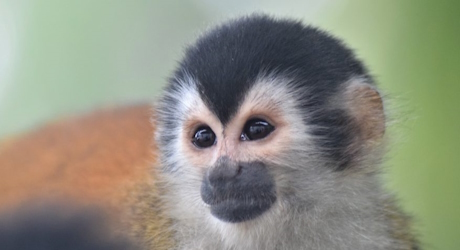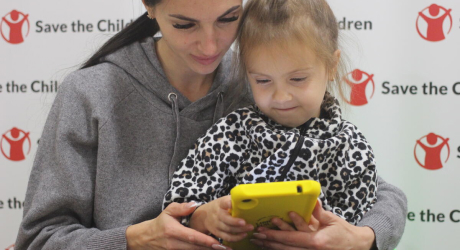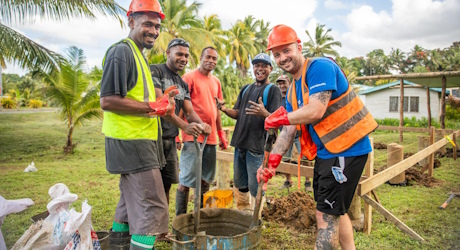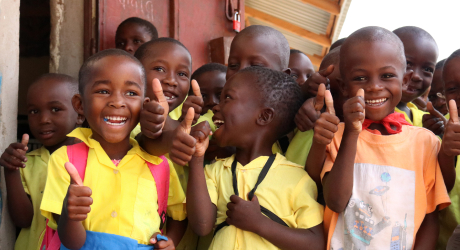Footprints Project
Since 2005, travelers like you have helped us change the world through micro-donations.
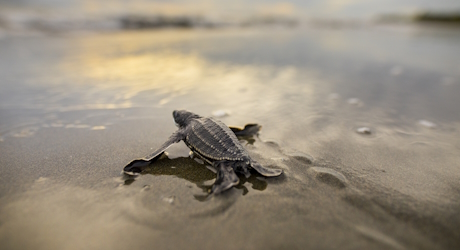
-
A total of
3088
Travelers
-
donated
$18791.1
(75% funded) -
to help improve
Environment
-
impacting
5000
people -
in
Panama
Project Background
The Bocas del Toro Province and indigenous Comarca Ngäbe Buglé, on the Caribbean coast of Panama, is a critical area for sea turtle nesting and foraging, hosting globally important populations of hawksbills and leatherbacks. Since Sea Turtle Conservancy (STC) established its monitoring programs in 2003, nesting numbers have steadily increased, indicating that the local population is responding positively to conservation measures.
Unfortunately, the sea turtles that nest on these beaches face several emerging threats, including illegal hunting of nests and turtles, predation by domestic dogs, impacts from climate change, and the harpooning of turtles by fishermen in the sea. In addition to conducting important research studies, STC conducts a variety of protection activities aimed at reducing these threats, such as: operating a hatchery on Soropta Beach, offering spay and neuter clinics for local communities, relocating and caging nests, and collaborating with law enforcement to report illegal hunting.
In order for important populations of sea turtles to continue to recover, it is critical that STC maintain a presence on the nesting beaches in the Bocas del Toro region.
Project Overview
The main goal of this project is to conserve key sea turtle nesting beaches and promote the recovery of hawksbill and leatherback nesting populations in Bocas del Toro Province and the Comarca Ngäbe Buglé. The program consists of conducting daytime beach surveys to record sea turtle nesting activity and nighttime patrols to collect biometric data and flipper-tag nesting hawksbill and leatherback sea turtles. On Soropta Beach, STC will directly protect nests from illegal hunters by relocating them to a hatchery where they are monitored 24 hours a day. STC intends to continue operating the hatchery until the underlying issues of illegal hunting are addressed.
An integral part of the project will be the continued implementation of an education and outreach program that will focus on youth in coastal communities. Activities will focus on sea turtles but will also aim to improve awareness of marine and coastal ecosystems in general, the threats they face, and the need to actively protect them. Such activities will hopefully encourage younger generations to become involved in conservation efforts in their communities.
STC will also work with stakeholder groups from local communities and businesses to continue implementation of sea turtle ecotourism activities. These initiatives provide alternative income for community residents, thus reducing the necessity to take turtles and nests from project beaches and coastal waters.
Key Project Outcomes
The project’s long-term goal is to eliminate illegal hunting at these study sites and fully recover the region’s leatherback and hawksbill populations.
The short-term success of the project will be evaluated in terms of the number of local people participating and receiving information about the project as well as by the timely implementation of the conservation and population recovery activities laid out in the project work plan.
The long-term success of the project will be determined through continued monitoring of hawksbill and leatherback nests. Increased survivorship and hatching and emergence success of nests will be used as a measure of the ability of the project to protect nests on the monitored beaches.
What costs are covered?
The total annual budget for this project is about $150,000 (US). A portion of that is covered by the U.S. Fish and Wildlife Service ($52,000) and the Marisla Foundation ($25,000). The requested 25,000 AUD from Footprints will assist with filling this gap in funding.
Of the 25,000 AUD, 10,000 will cover salaries for indigenous beach monitors; 5,000 will cover research supplies, such as flipper tags, measuring tape, and screens to protect nests; and the remaining 10,000 will cover the costs to operate the hatchery on Soropta Beach.
Partner and Community Involvement
Since the start of the project, STC has partnered with members of indigenous communities close to project beaches, who are trained and employed as beach monitors, boat captains, cooks, and guards. STC collaborates on all project activities with members of community NGOs in the region; members conduct project activities with technical and logistical support from STC staff.
STC maintains a close relationship with government authorities. All project activities are conducted under permit from MiAmbiente, and annual reports are presented to MiAmbiente and the Authority for Aquatic Resources of Panama (Autoridad de los Recursos Acuáticos de Panamá - ARAP). STC collaborates with these agencies and the police to report observations of illegal sea turtle use so that they can take appropriate action.
STC also collaborates on environmental education activities with community groups and other conservation organizations. A special effort is being made to involve residents of coastal communities where human activities might be having a negative impact on sea turtle populations or their habitats.
How does this project fit into a larger strategy?
Due to the highly migratory life cycle of sea turtles, the conservation of these important species must be carried out on a regional scale. For more than 60 years, STC has conducted a long-term research and monitoring program at Tortuguero, Costa Rica – an important sea turtle nesting beach located north of its Bocas del Toro monitoring area. This project fits well with the organization’s long-term strategies and goals for sea turtle recovery along the Caribbean coast of Central America.
Traveling soon? When you buy travel insurance with us, you can make a contribution towards a cause you care about.
Get a quote